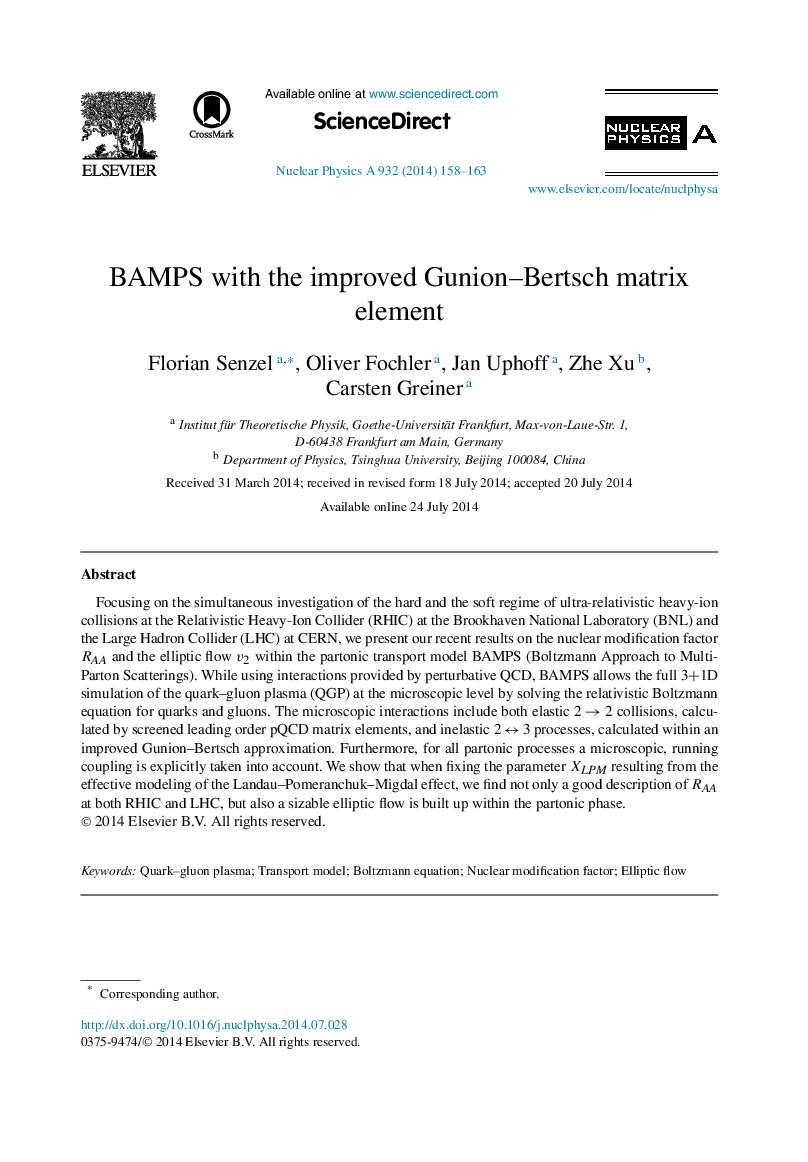| Article ID | Journal | Published Year | Pages | File Type |
|---|---|---|---|---|
| 1835795 | Nuclear Physics A | 2014 | 6 Pages |
Abstract
Focusing on the simultaneous investigation of the hard and the soft regime of ultra-relativistic heavy-ion collisions at the Relativistic Heavy-Ion Collider (RHIC) at the Brookhaven National Laboratory (BNL) and the Large Hadron Collider (LHC) at CERN, we present our recent results on the nuclear modification factor RAA and the elliptic flow v2 within the partonic transport model BAMPS (Boltzmann Approach to Multi-Parton Scatterings). While using interactions provided by perturbative QCD, BAMPS allows the full 3+1D simulation of the quark-gluon plasma (QGP) at the microscopic level by solving the relativistic Boltzmann equation for quarks and gluons. The microscopic interactions include both elastic 2â2 collisions, calculated by screened leading order pQCD matrix elements, and inelastic 2â3 processes, calculated within an improved Gunion-Bertsch approximation. Furthermore, for all partonic processes a microscopic, running coupling is explicitly taken into account. We show that when fixing the parameter XLPM resulting from the effective modeling of the Landau-Pomeranchuk-Migdal effect, we find not only a good description of RAA at both RHIC and LHC, but also a sizable elliptic flow is built up within the partonic phase.
Keywords
Related Topics
Physical Sciences and Engineering
Physics and Astronomy
Nuclear and High Energy Physics
Authors
Florian Senzel, Oliver Fochler, Jan Uphoff, Zhe Xu, Carsten Greiner,
